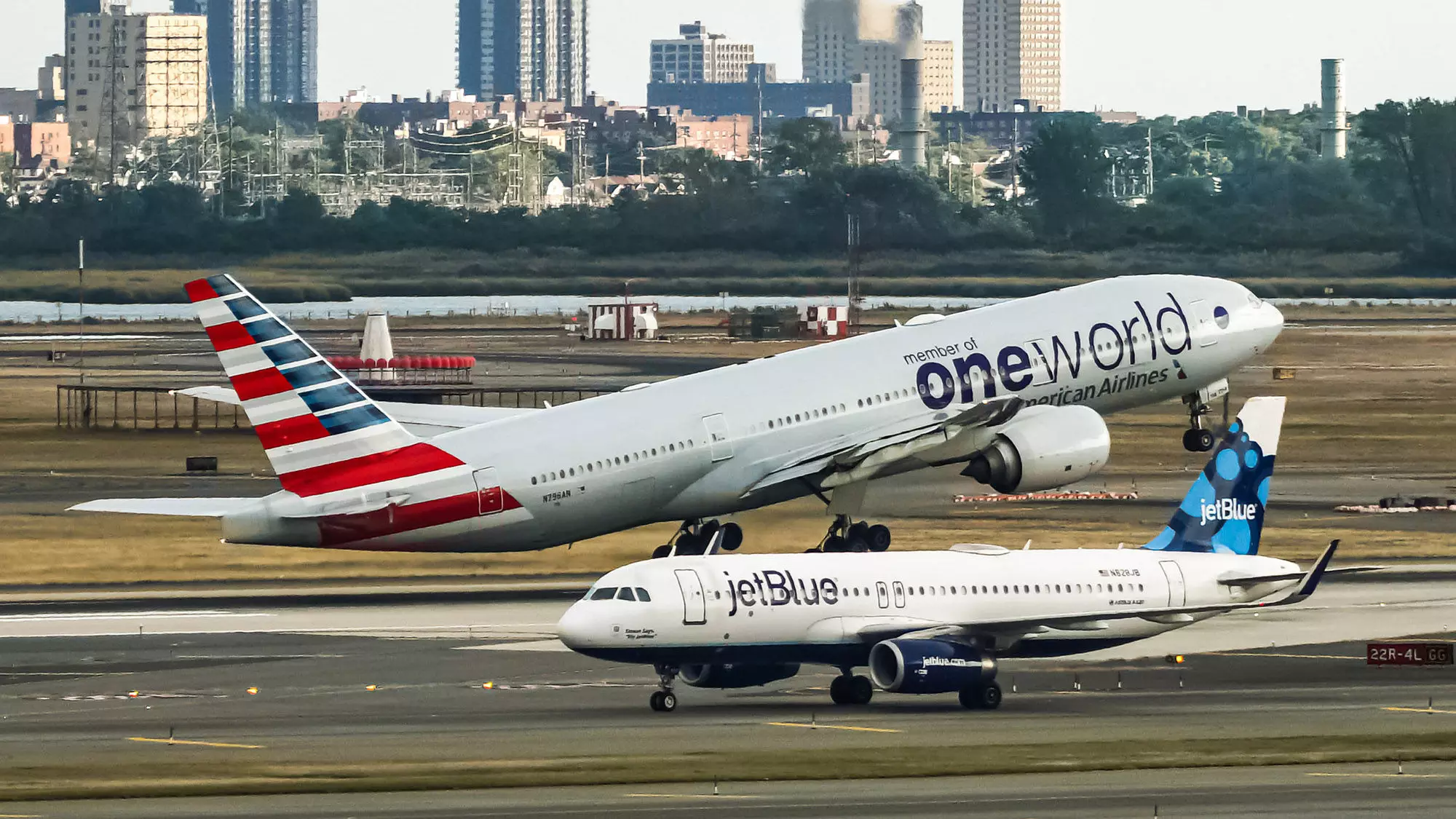In a tale of ambitious partnerships gone awry, American Airlines has found itself embroiled in a legal battle with JetBlue, suing for over $1 million concerning unresolved payments tied to their once-promising Northeast Alliance (NEA). Announced in July 2020, this partnership aimed to amalgamate operations at pivotal airports like Boston and New York’s major terminals. However, following a series of antitrust allegations led by the U.S. Department of Justice and joined by several states, the alliance spiraled into a complex legal showdown that unveiled the fragile underbelly of airline collaborations.
The air travel industry, particularly in the United States, has undergone drastic transformations over the last few decades, often marked by mergers, acquisitions, and alliances that promise to enhance service efficiency and foster competition. The NEA was initially portrayed as a beneficial venture for both airlines, potentially enriching the travel experience for consumers. However, as with many partnerships predicated on shared economic interests, the cracks began to show, leading to critical scrutiny and, ultimately, federal intervention.
The Legal Quagmire and Antitrust Pressure
The saga escalated rapidly when antitrust concerns came to the forefront, resulting in a lawsuit filed in September 2021. The ensuing judgment by Judge Leo Sorokin in May 2023 declared the NEA a violation of the Sherman Antitrust Act, forcing both airlines to disband the partnership. It is a stark reminder that not all alliances forged out of corporate strategy can withstand the glares of regulatory scrutiny.
Following the judgment, American Airlines claimed that various financial arrangements, specifically the Mutual Growth Incentive Agreement, remained unresolved. This accounting agreement, established to share revenue growth from NEA operations, became the crux of the dispute. The differing calculations regarding payment amounts revealed not only a rift between the airlines but also signaled a failing trust that once underpinned their collaboration. As American alleges, JetBlue has been uncooperative in settling these financial obligations, exacerbating an already tenuous situation.
Corporate Communications Reflect Frustration
The frustration appears to reverberate within American Airlines itself, as highlighted by a memo from Steve Johnson, their Vice Chair and Chief Strategy Officer. In it, he alludes to the failed negotiations aimed at potential renewal of their partnership. The emotional weight of this communication illustrates the discontent brewing internally over the thwarted aspirations for a revitalized collaboration. Johnson’s words echo a sentiment many within the industry can relate to: the need for partnerships that not only fit operational frameworks but also align with broader strategic objectives that accommodate consumer needs and corporate goals.
However, the failure to agree on a revised structure reflects deeper issues within the airline industry. It’s not merely about numbers and financial agreements but rather about the validity of cooperation in an environment increasingly wary of monopolistic practices. The necessity of evolution, both in terms of customer service and competitive strategies, becomes evident when traditional frameworks are challenged by government regulations and evolving market dynamics.
JetBlue’s Response: Silence Speaks Volumes
In contrast to American’s assertive legal moves, JetBlue’s reticence to directly address the lawsuit speaks volumes about its approach to managing public relations and internal pressures. During a recent earnings call, CEO Joanna Geraghty’s comments hinted at an ongoing effort to untangle the operational fallout from the NEA while refraining from deeper engagement in the lawsuit discussion. The nuanced approach might be a calculated strategy, focusing on resolving operational issues with American while sidestepping public conflict.
This duality reflects the reality faced by many airlines today: the challenge of navigating corporate disputes alongside maintaining a competitive edge. JetBlue’s reticence might suggest a desire to focus on recovery rather than engage in a protracted legal battle, yet it also raises questions about accountability and transparency in dealings with partner airlines.
The Bigger Picture: Lessons for the Airline Industry
As this lawsuit unfolds, it becomes apparent that such disputes are not merely isolated incidents but indicative of larger trends within the airline sector. The rise of regulatory scrutiny over potential anticompetitive behavior calls for a reevaluation of how airlines approach partnerships. The fallout from the NEA should serve as a cautionary tale for other airlines seeking similarly structured alliances, urging them towards more transparency and a willingness to adapt to regulatory environments.
It remains to be seen how this conflict resolves and what it will mean for the future of airline partnerships. However, the persistence of such disputes highlights a fundamental necessity: in the rapidly evolving landscape of air travel, agility and ethical considerations must take precedence. For now, the skies remain clouded with uncertainty as American Airlines and JetBlue navigate this intense legal storm.


Leave a Reply